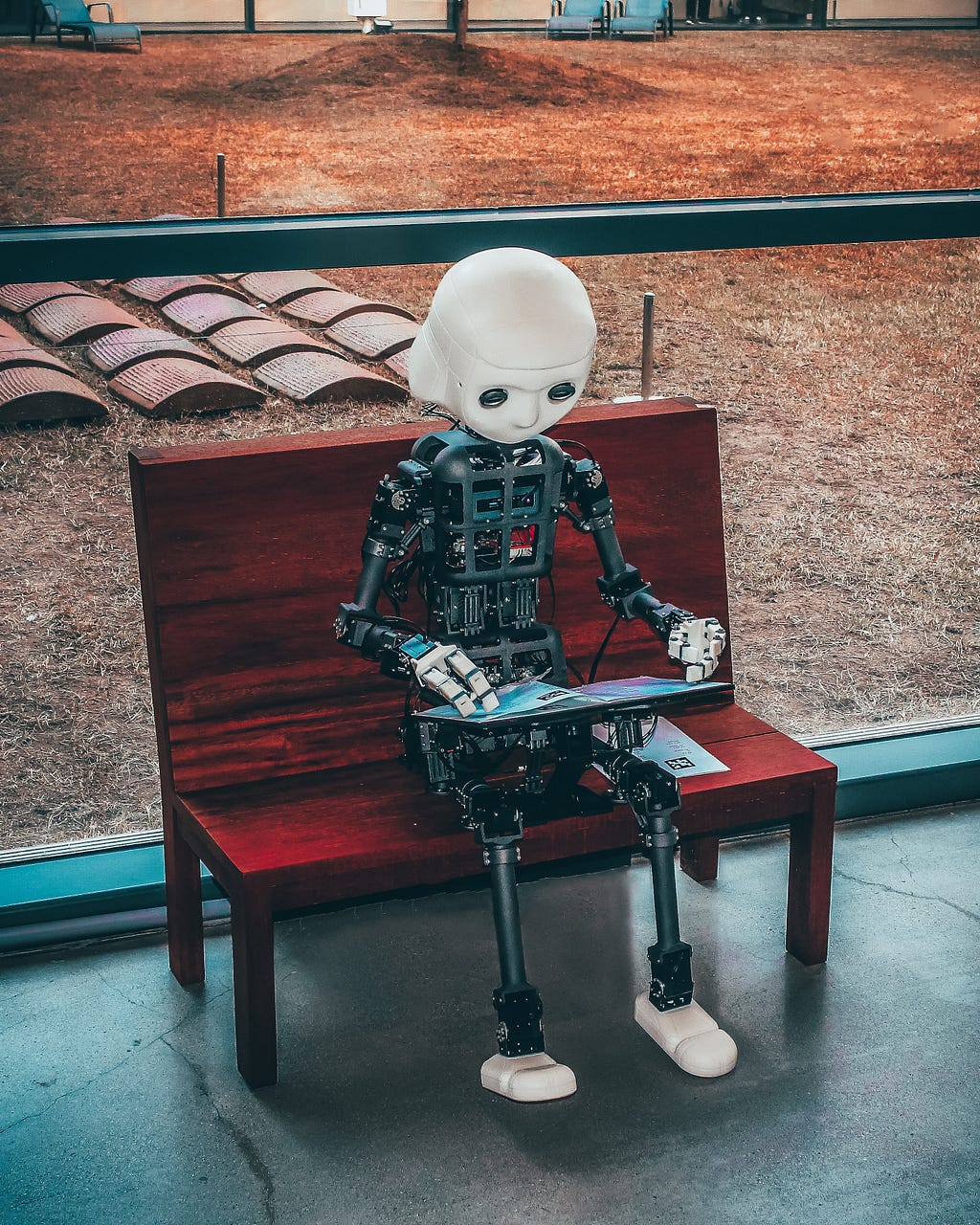
Artificial Intelligence Chapter 0: What It Is & Why You Should Care
Last Updated on August 3, 2022 by Editorial Team
Author(s): Mayar
Originally published on Towards AI the World’s Leading AI and Technology News and Media Company. If you are building an AI-related product or service, we invite you to consider becoming an AI sponsor. At Towards AI, we help scale AI and technology startups. Let us help you unleash your technology to the masses.

From Wall-E to Star Wars’ R2D2, our understanding of artificial intelligence has been shaped by the fantastical ideas put forth in science fiction, which tends to portray a futuristic world with flying cars and robotic sidekicks — a world that man and machine inhabit in concert. In reality, though, artificial intelligence is already everywhere, and if you don’t live under a rock, umm, sorry, I meant to own a smartphone and watch Netflix, you’ve probably interacted with it without even knowing it. But, if the age of AI really is here, why don’t our lives more closely resemble science fiction?
What is Artificial Intelligence?
AI is a technology that allows machines to simulate human behavior. It is a field of computer science that allows machines to execute complex tasks such as image recognition, decision making, and conversing. Getting machines to do this is not straightforward and requires that we write complex algorithms and first “train” them to achieve the outcome that we desire. This training can be accomplished in two ways:
> Hard coding, where instructions for individual possibilities are programmed into the machine.
> Machine learning, where the machine learns from data that it is fed.
A Brief History of Artificial Intelligence
While AI, as we know it today, is less than a century old, the concept of AI is not new — intelligent robots and artificial entities have been found to appear in human texts as far as ancient Greece. AI has its roots in the deceptively simple question of whether or not machines can think. Alan Turing, was an eminent mathematician, who is famous for breaking the Nazi Enigma code during World War II. This code gave the Allied Powers the edge they needed to win the war — it also laid the foundation for the creation of the computer.
Dartmouth scientist, John McCarthy, expanded on Turing’s ideas and coined the term “artificial intelligence” in 1955. McCarthy assembled a team of computer scientists and mathematicians to investigate if robots could learn the same way that children do, through trial and error, to build formal reasoning. The team hoped to ascertain how they could make machines “use language, form abstractions and concepts, solve [the] kinds of problems now reserved for humans, and improve themselves.”
All of this was more than 65 years ago. Today artificial intelligence is no longer a figment of our imagination and has already begun to revolutionize how we live life and conduct work, whether we realize it or not. While at its core, AI may be a problem for computer scientists and mathematicians, it now touches every single one of us and has become a critical part of the way we live our lives and conduct business, as illustrated by the broad example use cases of AI that follow.
Big Data Processing
Moore’s Law may have slowed, but the pace at which we generate data has exploded, so much so that 90% of the world’s data has been generated in the last two years. Massive volumes (in orders of magnitude upwards of 108 GB/minute) of data are generated every single minute, a quantity that would be impossible for humans to process unaided by modern machines. Thanks to advancements in processing speed, computers can now make sense of this data more swiftly. This has implications for a number of industries.
In healthcare, for example, exabytes of data are collected in the form of patient records and test results annually and are now being leveraged to bring us closer to the dreams of personalized medicine and early cancer detection, among other things. All of this data is generated at a rapid pace, contributing to the velocity of big data.
Robotics
Robots evoke images of Terminator, Meet the Robinsons, and Sophia-the robot, but encompass more than just humanoid machines. Robots are defined by Wikipedia as machines programmable by a computer, “capable of carrying out a complex series of actions automatically… Robots may be constructed to evoke human form, but most robots are task-performing machines, designed with an emphasis on stark functionality, rather than expressive aesthetics.”
Robots include machines like self-driving cars and space probes.

Robots can also include something as mundane as a vacuum cleaner, depending on how it’s constructed. To transform a vacuum cleaner into a robot, we would add to it programmable motors that might, for example, be automatically able to clean a given floor. We don’t, however, have to stop there and could use artificial intelligence to create an even smarter robot, such as the Roomba Robot vacuum cleaner, that adapts to its surroundings and can figure out the floor plan and avoid surprise objects on its own, and even clean automatically when you’re not at home.
Conversational Agents
Most of us have at least some experience with chatbots, which are becoming more and more commonplace on modern-day websites. These are text-based and, while quite powerful, are only helpful for a small number of tasks. They often utilize rule-based programming to match user queries to plausible replies for basic FAQs but tend to be useless in the face of undefined requests.
This is where Conversational AI comes in, of which the most well-known examples are Apple’s Siri and Amazon’s Alexa. These bots use natural language processing — a sub-field of AI focused on getting computers to understand human language. This allows them to respond appropriately when you say, “ Hey Siri, how’s the weather today?” or ask them to place a call to your mother. The AI that forms the foundation of these systems transmutes your speech to text, feeds it to a search engine, and then reads back the response. Conversational AI also possesses the characteristic which humans usually, but not always, also possess of learning from mistakes and experience. When Alexa or Siri err in their response to a query, they use the knowledge of that mistake to learn and correct themselves in the future.
Conclusion
Generations have long feared the consequences of AI, imagining a world in which machines dominate and wreak havoc on human society. However, artificially intelligent machines, like IBM’s Watson, exist to help us with complex tasks that would be too tedious, boring, repetitive, time-consuming, or even impossible if we were to attempt to do them on our own. When it comes to AI, it is critical to remember that AI will not replace humans — AI is not a case of man versus machine but, in fact, an exciting marriage of man and machine that will drive humanity forward in the decades to come.
Artificial Intelligence Chapter 0: What It Is & Why You Should Care was originally published in Towards AI on Medium, where people are continuing the conversation by highlighting and responding to this story.
Join thousands of data leaders on the AI newsletter. It’s free, we don’t spam, and we never share your email address. Keep up to date with the latest work in AI. From research to projects and ideas. If you are building an AI startup, an AI-related product, or a service, we invite you to consider becoming a sponsor.
Published via Towards AI
Take our 90+ lesson From Beginner to Advanced LLM Developer Certification: From choosing a project to deploying a working product this is the most comprehensive and practical LLM course out there!
Towards AI has published Building LLMs for Production—our 470+ page guide to mastering LLMs with practical projects and expert insights!

Discover Your Dream AI Career at Towards AI Jobs
Towards AI has built a jobs board tailored specifically to Machine Learning and Data Science Jobs and Skills. Our software searches for live AI jobs each hour, labels and categorises them and makes them easily searchable. Explore over 40,000 live jobs today with Towards AI Jobs!
Note: Content contains the views of the contributing authors and not Towards AI.














